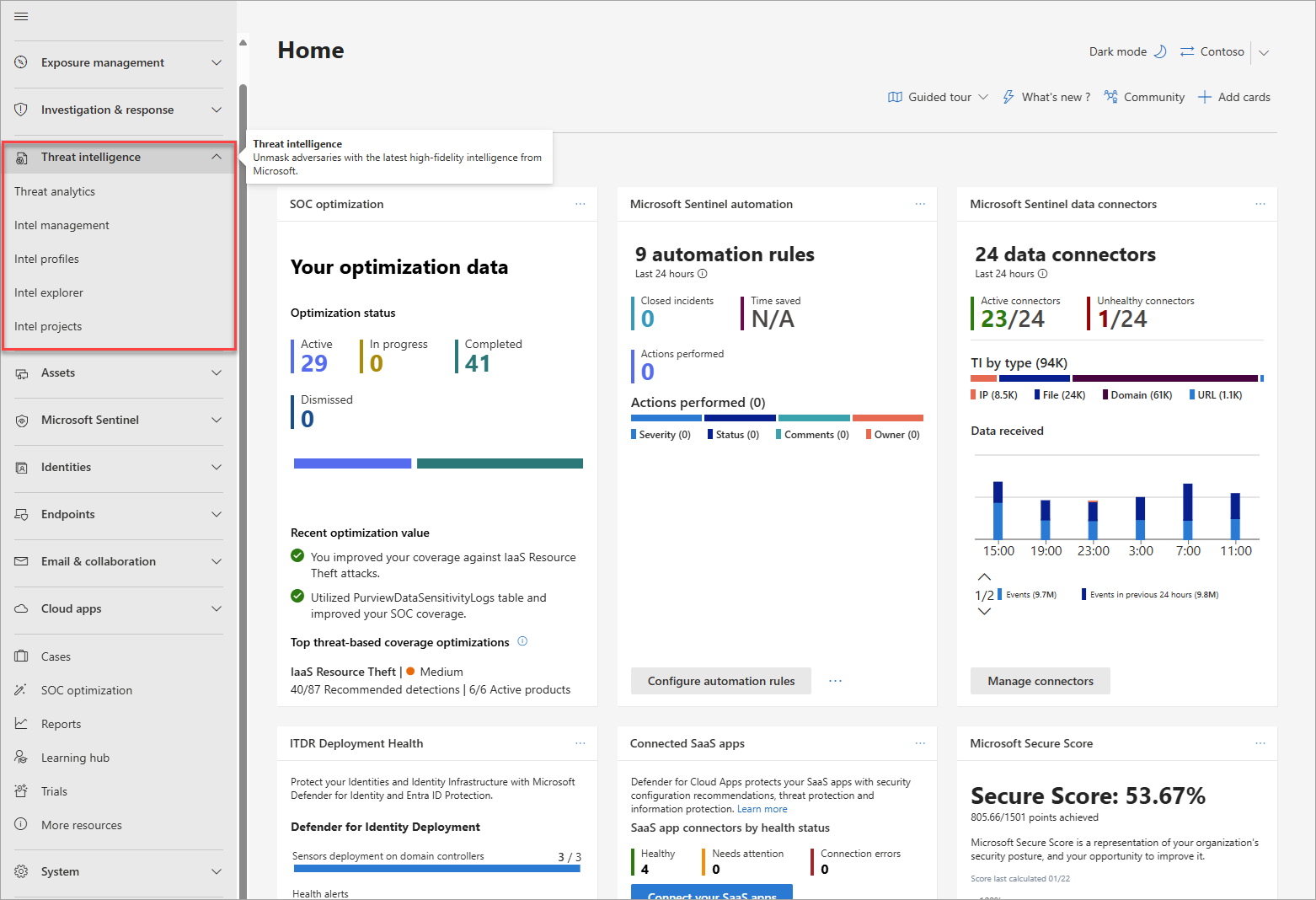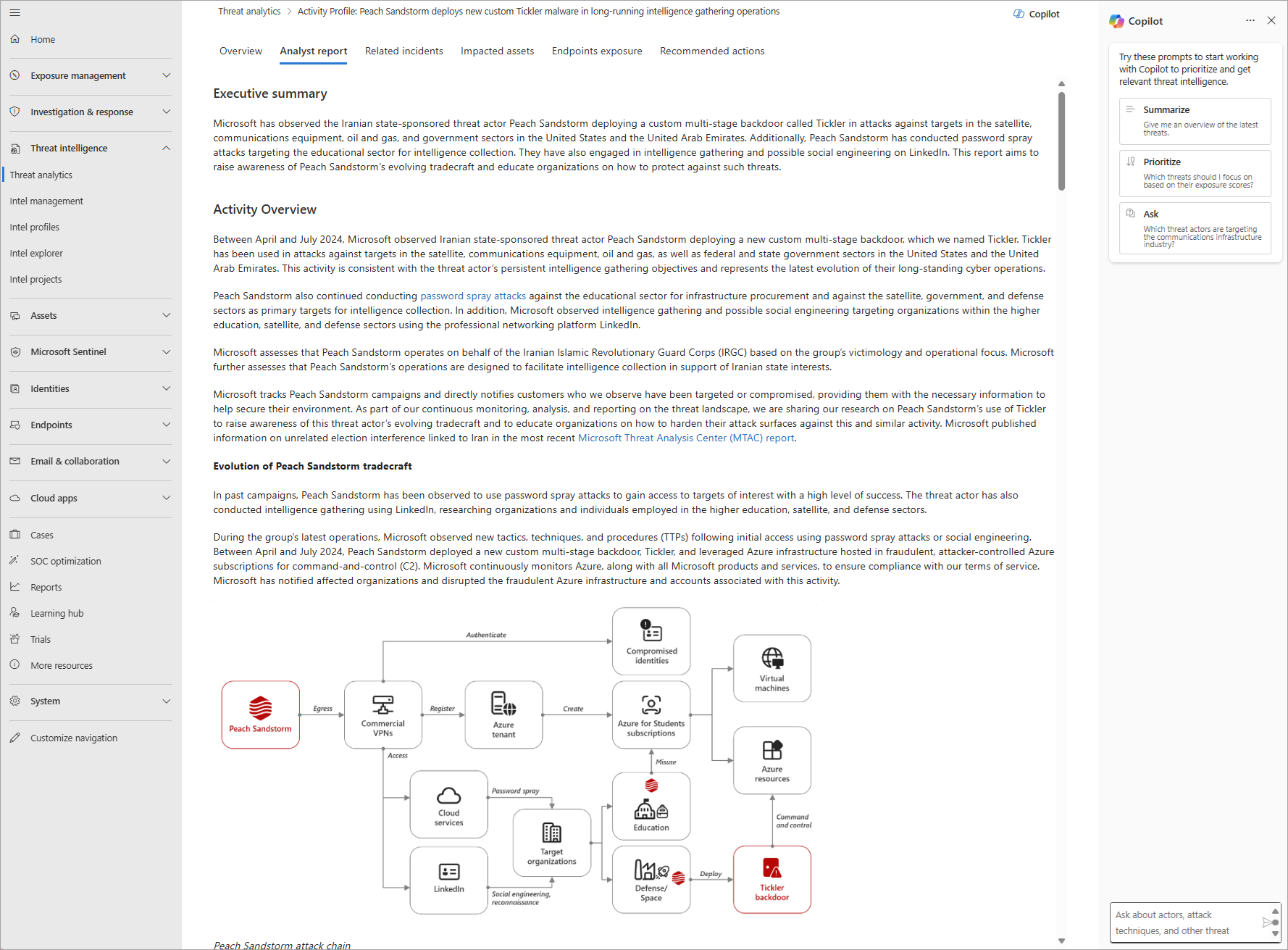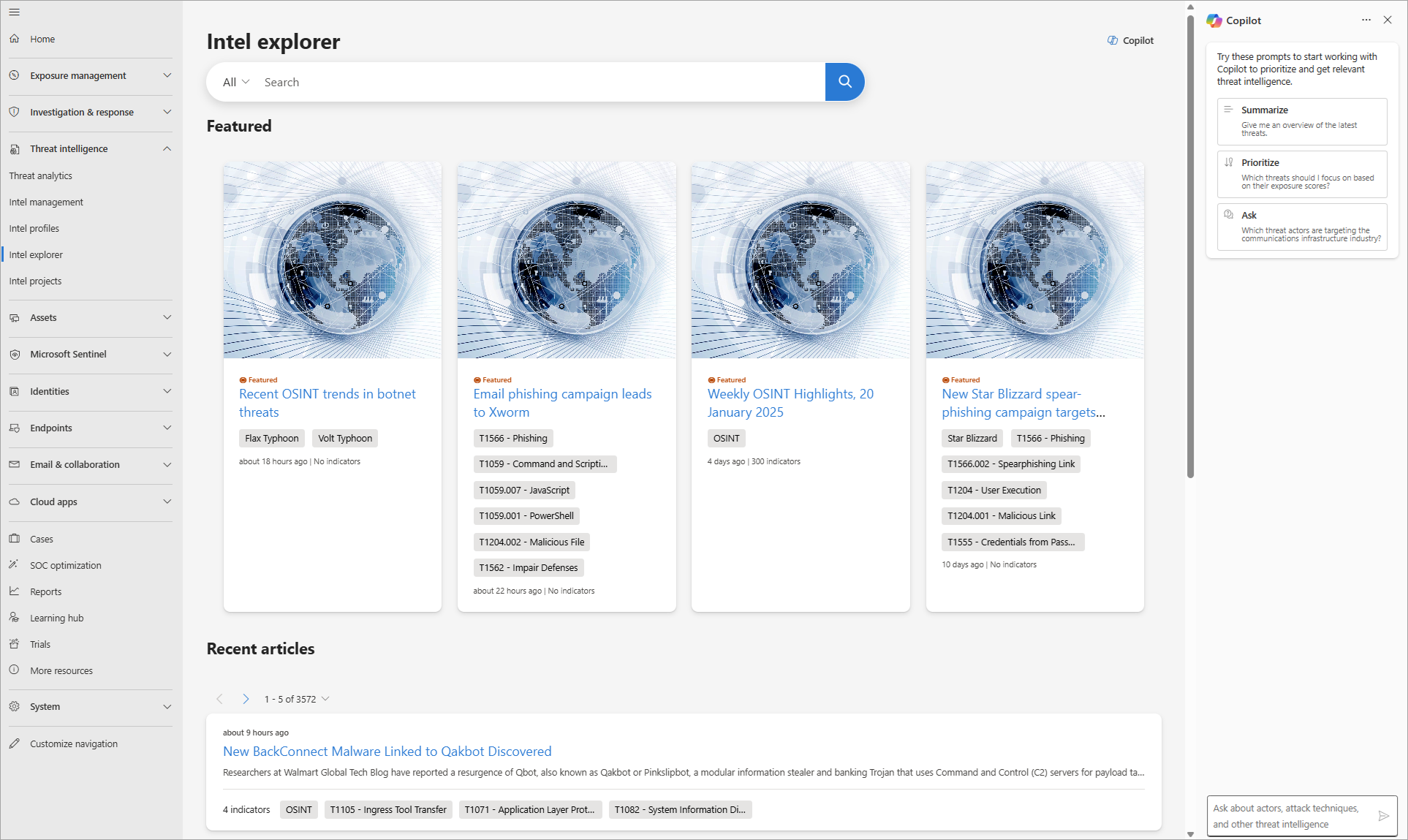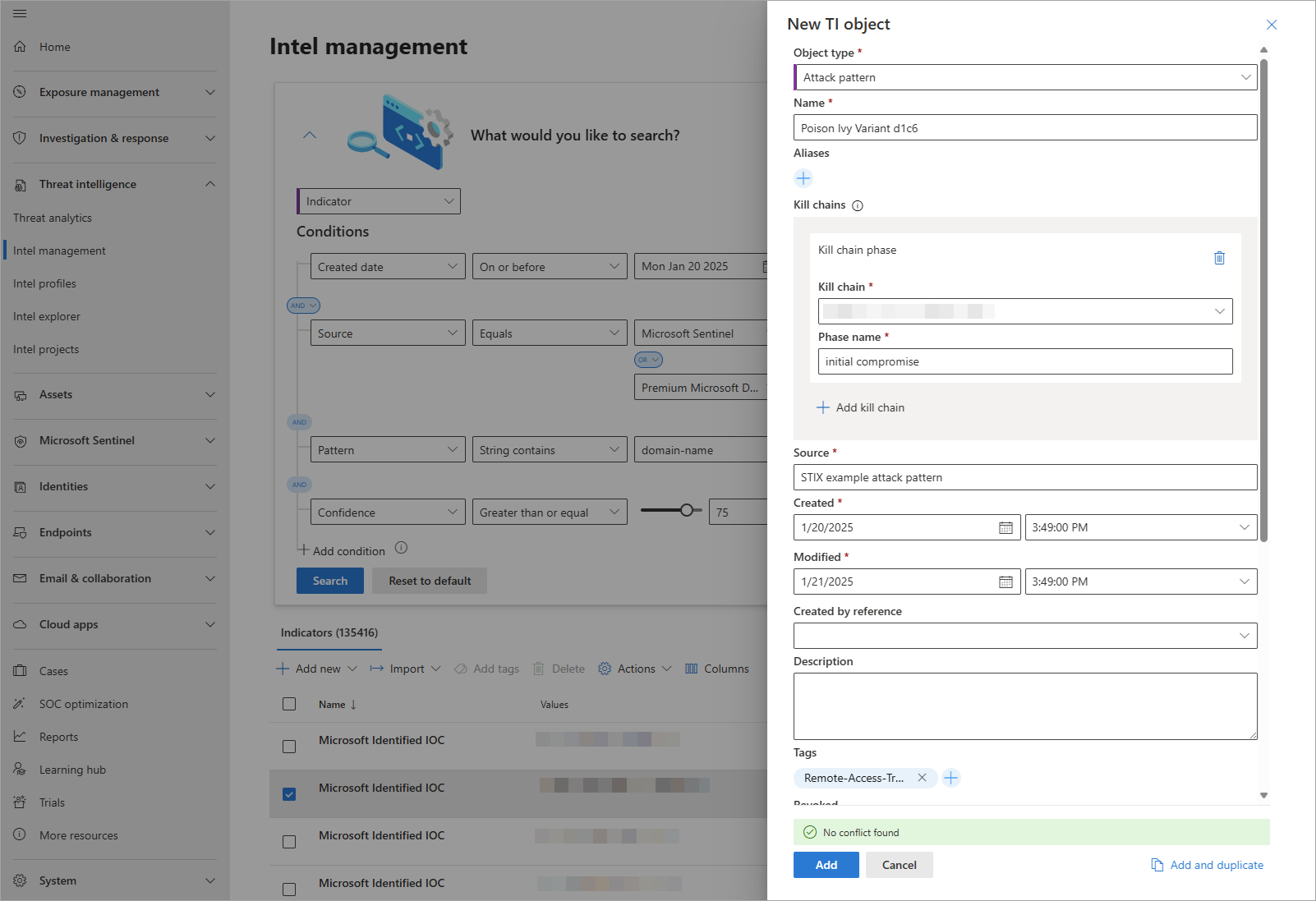Uncover adversaries with threat intelligence in Microsoft's unified SecOps platform
Uncover and neutralize modern adversaries with threat intelligence in Microsoft’s unified security operations (SecOps) platform. Whether you use Microsoft's threat intelligence or other sources important to your SecOps organization, Threat intelligence in the Microsoft Defender portal unifies the tools needed to identify cyberattackers and their infrastructure.
Threat intelligence in the Defender portal
The emergence of new cybersecurity threats and threat actors and the continuous evolution of the threat landscape result in an ever-increasing amount of threat intelligence that security operations centers (SOCs) must investigate. This threat intelligence takes many forms—from specific indicators of compromise (IOCs) to reports and analyses—and can come from various sources. Microsoft's unified SecOps platform in the Defender portal consolidates all your threat intelligence in one location so SOCs can assess this intelligence quickly and accurately to make informed decisions. Microsoft's unified SecOps platform in the Defender portal pulls threat intelligence from the following sources:
- Microsoft Defender XDR Threat analytics reports
- Microsoft Defender Threat Intelligence articles and data sets
- Microsoft Sentinel threat intelligence
Threat analytics in Microsoft Defender XDR
Threat analytics is the Microsoft Defender XDR in-product threat intelligence solution from expert Microsoft security researchers. It's designed to assist security teams to be as efficient as possible while facing emerging threats, such as:
- Active threat actors and their campaigns
- Popular and new attack techniques
- Critical vulnerabilities
- Common attack surfaces
- Prevalent malware
Analyst report section of a threat analytics report
Each report provides an analysis of a tracked threat and extensive guidance on how to defend against that threat. It also incorporates data from your network, indicating whether the threat is active and if you have applicable protections in place.
For more information, see Threat analytics in Microsoft Defender XDR.
Microsoft Defender Threat Intelligence
Microsoft Defender Threat Intelligence (Defender TI) helps streamline security analyst triage, incident response, threat hunting, and vulnerability management workflows. Defender TI aggregates and enriches critical threat information in an easy-to-use interface where users can correlate IOCs with related articles, actor profiles, and vulnerabilities. Defender TI also lets analysts collaborate with fellow Defender TI-licensed users within their tenant on investigations.
You can access Defender TI in the following pages within the Threat intelligence navigation menu of the Defender portal:
- Intel profiles - Access a comprehensive library of threat actor, tooling, and vulnerability profiles.
- Intel explorer - Browse threat intelligence for relevant analyses, artifacts, and indicators.
- Intel projects - Manage security artifacts for your entire tenant.
Defender TI's Intel explorer page in the Defender portal
For more information, see What is Microsoft Defender Threat Intelligence?.
Threat intelligence management
Intel management is powered by Microsoft Sentinel and provides tools to update, search, and create threat intelligence and manage it at scale.
The most common forms of threat intelligence are threat indicators, or IOCs. Another facet of threat intelligence represents threat actors, their techniques, tactics, and procedures (TTPs), their infrastructure, and their victims. Intel management supports managing all these facets using structured threat information expression (STIX), the open-source standard for exchanging threat intelligence.
Intel management operationalizes your threat intelligence while Microsoft Sentinel sources it with the following methods of ingestion:
- Import threat intelligence into Microsoft Sentinel by enabling data connectors to various threat intelligence platforms, including Microsoft’s own Defender TI.
- Connect threat intelligence to Microsoft Sentinel by using the upload API to connect various threat intelligence platforms or custom applications.
- Create threat intelligence individually or import using a file from the Intel management interface.
Example of adding a new STIX object in Intel management
For more information, see Understand threat intelligence in Microsoft Sentinel.



